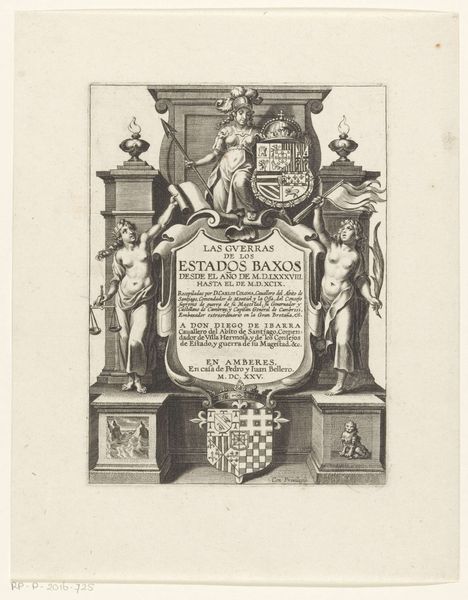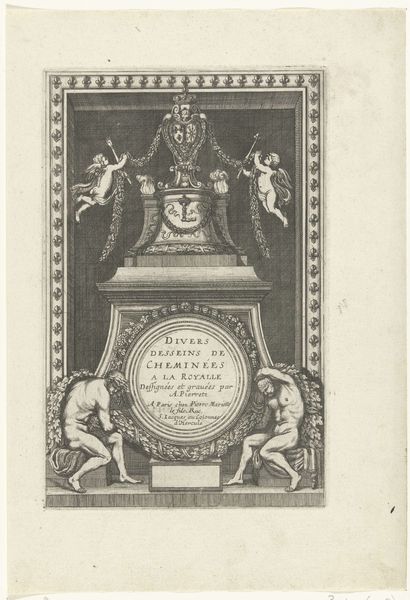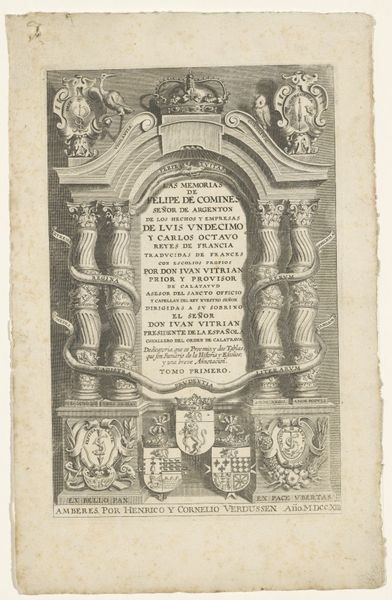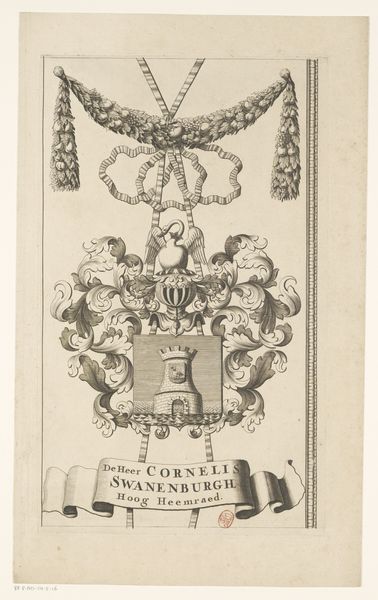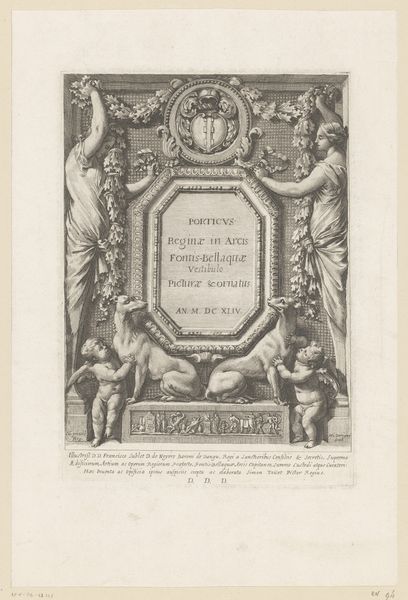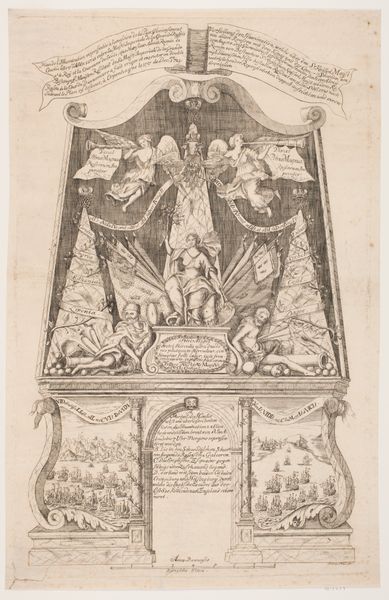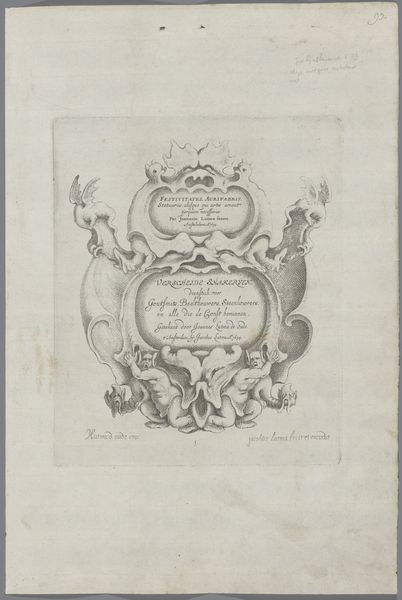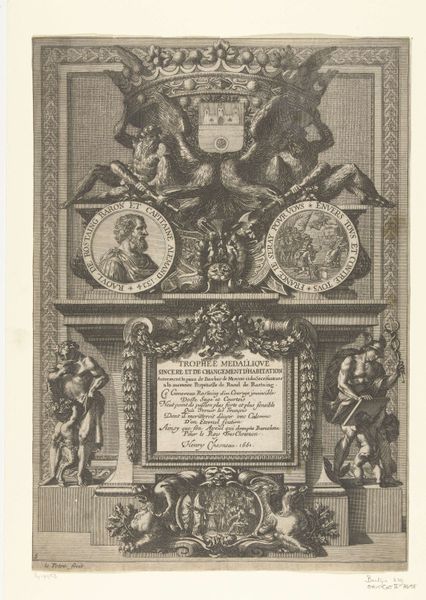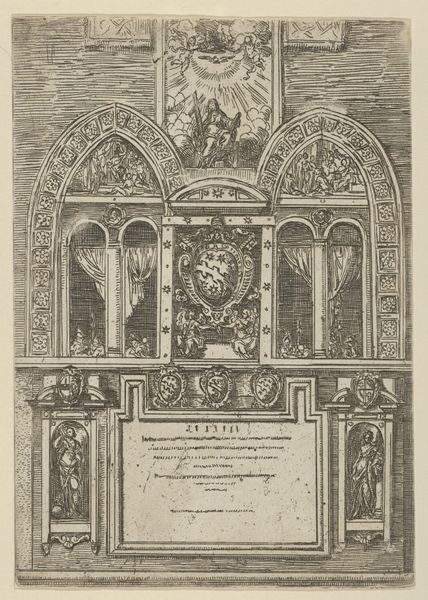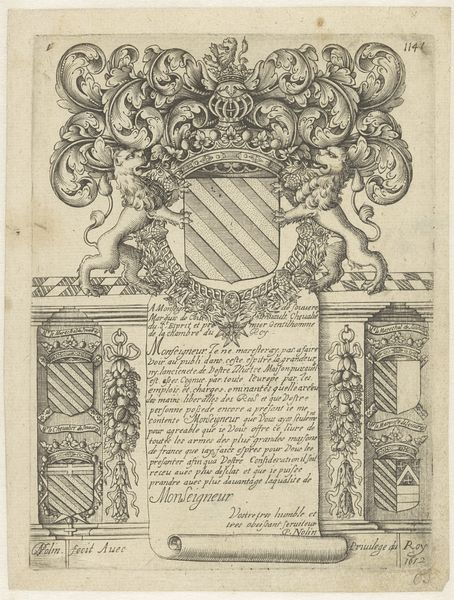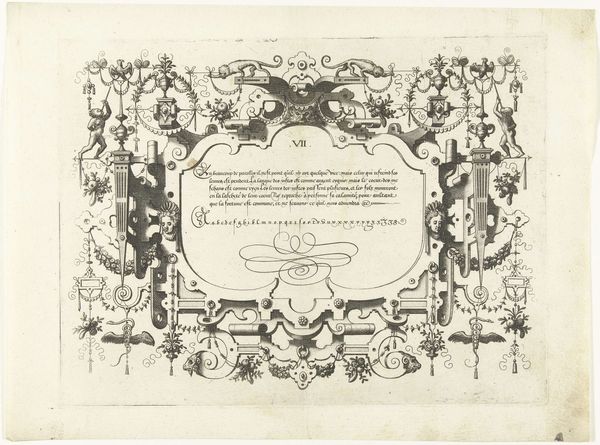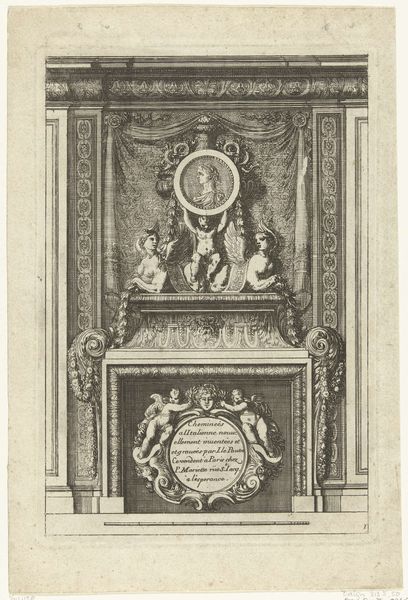
graphic-art, print, engraving, architecture
#
graphic-art
#
baroque
#
dutch-golden-age
# print
#
old engraving style
#
cityscape
#
engraving
#
architecture
Dimensions: height 328 mm, width 203 mm
Copyright: Rijks Museum: Open Domain
Curator: Hubert Quellinus' engraving, "Sokkel met het wapen van Amsterdam" from 1655, showcases the Amsterdam coat-of-arms, rendered in fine lines. It’s part of the Rijksmuseum’s collection. Editor: My immediate impression is one of formal declaration. The print’s high contrast creates a sense of authority, and the architectural setting suggests permanence. Curator: Absolutely. Structurally, we see a clear division: the heraldic elements atop a plinth, which serves to amplify the heraldic composition above it. The symmetry of the lions flanking the shield also reinforces this rigidity. Editor: These lions are important. They represent strength and courage, both classical virtues closely associated with civic pride in the 17th century, particularly within the burgeoning mercantile power that Amsterdam embodied at the time. Curator: Consider also the use of line weight. Quellinus varies the thickness of the engraved lines to suggest depth and shadow, a key baroque stylistic choice that aims to give an illusion of volume. This heightens the visual drama and draws attention to specific details like the texture of the lions' manes or the ornate detailing of the crown. Editor: Indeed. The crown, of course, denotes sovereignty and echoes the historical narrative of Amsterdam's ascension as a major economic power, practically its own sovereign entity. The three Saint Andrew's crosses represent the city’s patronage. Curator: A fascinating intersection between form and context! Quellinus meticulously uses his medium to evoke a sense of civic pride. We see, through precise graphic elements, the city's ambitions and status made manifest. Editor: In a broader sense, prints like these reinforced cultural memory and propagated specific ideas about the city’s identity—identity and aspirations being disseminated far and wide. Curator: Well, studying Quellinus’ technique reveals more than a municipal image, it also unearths 17th century visual rhetoric and material processes. Editor: And unpacking these images as cultural symbols can unveil complex histories of civic aspiration and identity construction that persist to this day.
Comments
No comments
Be the first to comment and join the conversation on the ultimate creative platform.
